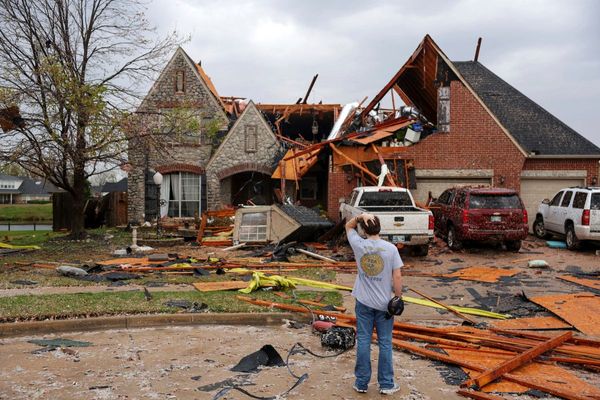The former pilot charged with the murders of two retirees in the Victorian High Country is accused of returning to the area months after the alleged murders to burn the victims' bodies, court documents have revealed.
WARNING: This article contains content that some readers may find distressing.
Russell Hill and Carol Clay disappeared during March, 2020, from a camping trip to the remote Wonnangatta Valley in the Victorian High Country.
Their burnt-out tent and Mr Hill's LandCruiser ute were later discovered at a campsite in the area.
In November, 2021, police charged former Jetstar pilot Greg Lynn with their murder.
Prosecutors have released a summary of the police allegations against Mr Lynn during a committal hearing at the Melbourne Magistrates' Court, which will determine if there is enough evidence for the case to go to trial.
The court has heard Mr Lynn plans to plead not guilty.
The summary does not include all of the police evidence.
In that document, police allege Mr Lynn burnt the pair's campsite after killing them on March 20, 2020. They say he travelled out of the valley with their bodies, phones, car keys and a drone.
Police allege he hid the bodies in bushland outside the small Gippsland town of Dargo and got rid of the pair's other belongings, which still have not been found.
The next day, police allege, Mr Lynn drove out of the area along the Great Alpine Road at Buckland's Gap where Mount Hotham Alpine Resort security cameras took four photos of his car.
Police then tried to match those photos to location data taken from Mr Hill's phone.
Detectives say data from Telstra showed Mr Hill's phone to be in the vicinity of the resort cameras 10 seconds after Mr Lynn's car travelled past them.
In the summary of allegations, police say they found photos on Mr Lynn's phone which showed him painting his 4WD a different colour on June 4, 2020.
"Investigators allege the accused painted his vehicle to conceal his involvement with the murder of Hill and Clay," police write.
Police say they then obtained warrants to record Mr Lynn's home, car and phone.
"Investigators identified the accused to have conversations with himself whilst in various locations, at his home address and while camping on his own," the statement reads.
"It is alleged the accused at times referred to the deaths of Hill and Clay."
The documents reveal police say after finding the victim's bodies, they found a piece of skull and a bullet from which scientists were able to identify DNA belonging to Ms Clay.
They also found jewellery belonging to Ms Clay and bone fragments.
Police say they are still waiting for the results of scientific testing which will compare the bullet to a shotgun found at Mr Lynn's home.
Police say Mr Lynn had a licence for nine different guns.
The police documents go on to allege that in May and possibly November 2020, Mr Lynn returned to the bodies "where he further tampered with the human remains to dispose of the deceased".
"This involved burning, dispersing, and partially interring them," the document reads.
Forensic officer investigated shotgun struggle theory
Earlier, the committal hearing was told a forensic officer investigated whether Ms Clay was killed by accident over a struggle for a gun.
Victoria Police forensic officer Mark Gellatly said he was asked to investigate the possibility that Ms Clay was accidentally shot during a struggle between Mr Lynn and Mr Hill over a gun.
The scenario Mr Gellatly was asked to investigate was the possibility Mr Lynn became "annoyed" by the pair's drone and confronted them about it.
The forensic officer's statement reveals he was asked to consider whether Mr Hill grabbed Mr Lynn's shotgun before wrestling with the accused, "causing accidental discharge" which hit Ms Clay.
Mr Gellatly told the court he examined a number of vehicles, including a white LandCruiser ute.
"One possible bloodstain was located on an armrest," he told the court, but he said further testing was unable to confirm the substance was blood.
On the metal camper canopy at the back of Mr Hill's ute, which was found at the pair's campsite, Mr Gellatly said he detected what was thought to be "the location of splatter blood stains".
But he said further testing could not confirm the stains were from blood. He told the court he believed this was because the car was affected by heat from the fire that burnt Mr Hill's campsite.
"I've taken into consideration that it had the appearance of blood, it behaved like blood, it tested positive to a DNA screen test," he said.
The scientist's work established that the armrest stain was "more than 230 times [more likely] that [Mr] Hill was a contributor".
Mr Gellatly said two shotguns were tested, but no blood was detected on either.
He told the court his work could not confirm what action may had caused the blood stains on the car.
He said in winter when it was busy the cameras would capture 98 per cent of vehicles, only missing number plates where cars were tailgating.
"In summer, where there is less traffic and it is much more spread out, I would expect the capture rates to be almost 100 per cent," he said in his statement.
The hearing is ongoing.







